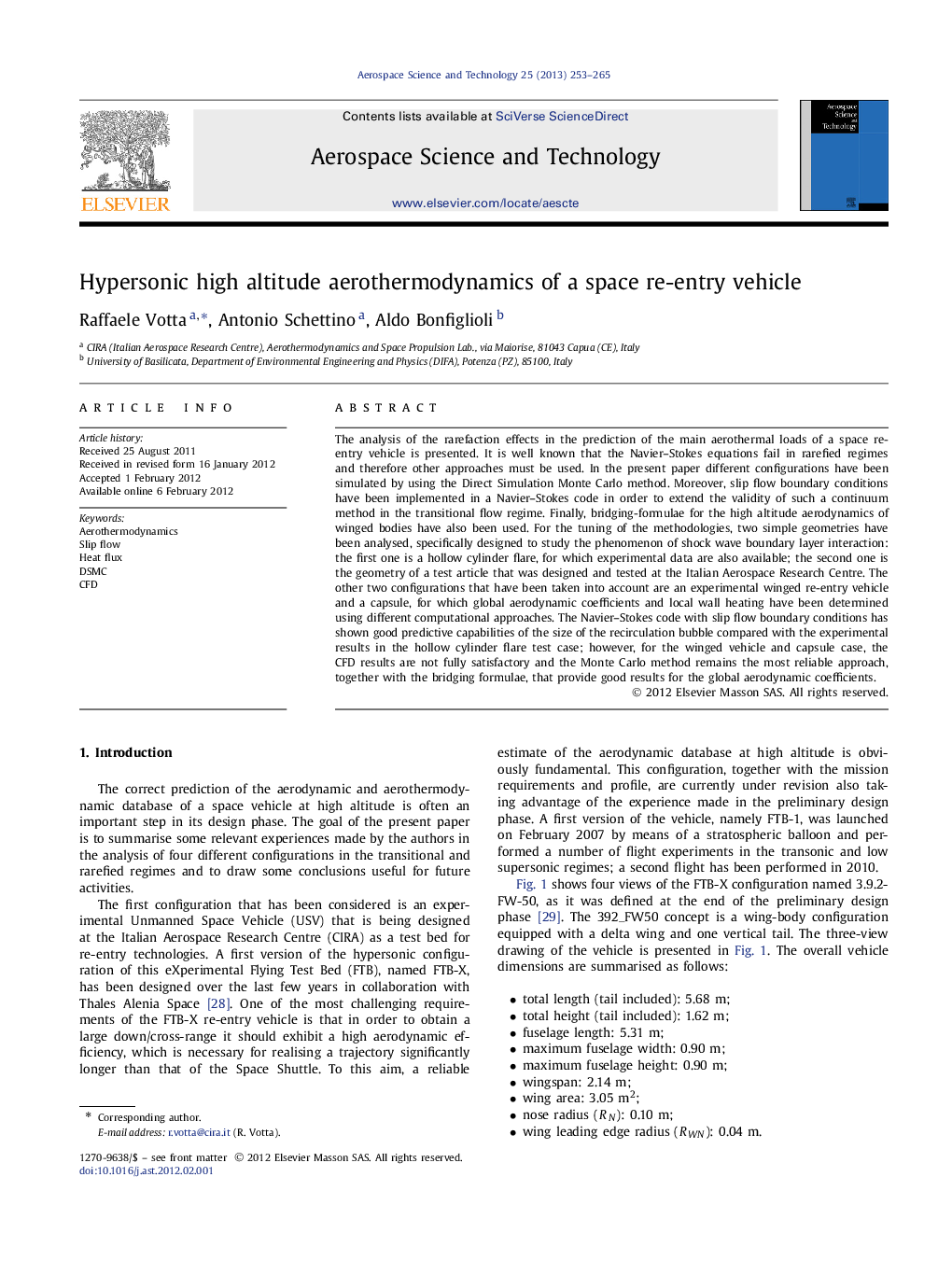| کد مقاله | کد نشریه | سال انتشار | مقاله انگلیسی | نسخه تمام متن |
|---|---|---|---|---|
| 1718247 | 1013835 | 2013 | 13 صفحه PDF | دانلود رایگان |

The analysis of the rarefaction effects in the prediction of the main aerothermal loads of a space re-entry vehicle is presented. It is well known that the Navier–Stokes equations fail in rarefied regimes and therefore other approaches must be used. In the present paper different configurations have been simulated by using the Direct Simulation Monte Carlo method. Moreover, slip flow boundary conditions have been implemented in a Navier–Stokes code in order to extend the validity of such a continuum method in the transitional flow regime. Finally, bridging-formulae for the high altitude aerodynamics of winged bodies have also been used. For the tuning of the methodologies, two simple geometries have been analysed, specifically designed to study the phenomenon of shock wave boundary layer interaction: the first one is a hollow cylinder flare, for which experimental data are also available; the second one is the geometry of a test article that was designed and tested at the Italian Aerospace Research Centre. The other two configurations that have been taken into account are an experimental winged re-entry vehicle and a capsule, for which global aerodynamic coefficients and local wall heating have been determined using different computational approaches. The Navier–Stokes code with slip flow boundary conditions has shown good predictive capabilities of the size of the recirculation bubble compared with the experimental results in the hollow cylinder flare test case; however, for the winged vehicle and capsule case, the CFD results are not fully satisfactory and the Monte Carlo method remains the most reliable approach, together with the bridging formulae, that provide good results for the global aerodynamic coefficients.
Journal: Aerospace Science and Technology - Volume 25, Issue 1, March 2013, Pages 253–265